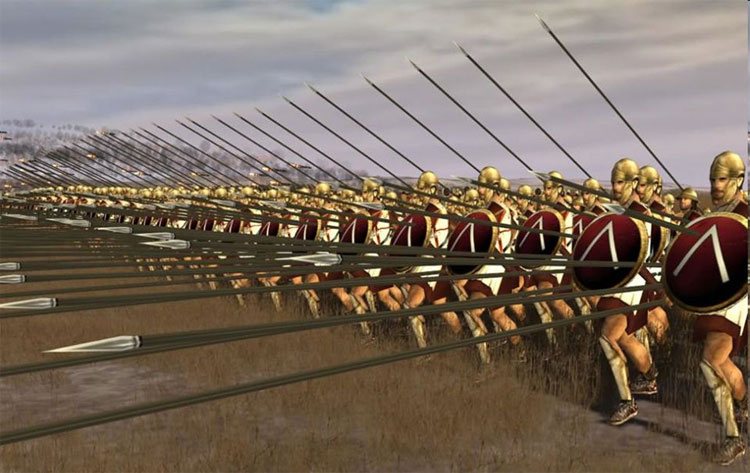Decode the terrifying power of Phalanx tactics in the history of war
Born in 2450 BC, Phalanx's formation is considered the oldest war art and surprisingly still exists today.
A Sumeria beer dating back to about 2450 BC (BC) showed a formation similar to the first standard Phalanx formation in human history.
In Greek, the term "Phalanx" is used to refer to a rectangular winter formation strategy with a jagged long spear. Historians believe that the origin of this strategy is based on how a hedgehog defends against predators. In Vietnamese, Phalanx can be translated as Battle . This type of tactic is commonly used in and is the most effective strategy for horsemen cavalry at the time.

This was the most effective strategy for horsemen cavalry at that time.
The Phalanx strategy is based on the Phalanx lineup, which includes individuals with good health to control many meters long spears and each individual must have a high sense of discipline as well as Good team formation skills to move, while maintaining the squad. With this hedgehog-like tactic like this, the enemy's cavalry will no longer have the power to hit the infantry squad directly, and even the enemy cavalry's horse when approaching the Phalanx formation will stop itself. without moving forward because of the jagged spear pointing towards me.
Western historians argue that the complete Phalanx formation began popular in Europe from the eighth century BC, this type of formation was used by many countries, many armies with different variations. For example, using spears about 2.7 meters long while the army of Macedonian Phalangites uses 4.3 meters long spears to resist the cavalry's spear which is up to 3 in length. , 8 meters.
In the face-to-face fighting between the two Phalanx formations, the party that uses the longer spear will definitely have a higher winning advantage than the opponent. A form of Phalanx formidable with long spears in the front and short spears in the rear, when approaching the enemy, the short spear soldiers behind will spill into melee while the long spear team still holds as a city wall.

A form of Phalanx formative attack with long spears in the front and short spears in the rear.
The weakness of the Phalanx squad is that it is too slow to move and is difficult to manage on the battlefield. For example, at the Battle of Lechaeum, a small force of Athens troops moved continuously with the javelins that made Sparta's Phalanx squad chaotic and had to flee afterwards. With light weapons, the soldier could slip between the Phalanx squad's gaps. Remember, the soldier in the Phalanx squad has a very heavy armor, it is hard to fight with light soldiers when being approached.
This strategy of more than 4000 years old today is still used by riot police forces to suppress the crowd. Of course, the spear has been replaced by guns, but basically, this wall of people is still applied thoroughly.
- Hoplite - The most powerful army in Greek history
- 4 military tactics have 1-0-2 in history only genius thought out
- Decode extreme military tactics of the Ottoman Empire
- 6 strange tactics create unexpected victories in the history of war
- Strange but particularly effective hunting tactics in the natural world
- 10 scary weapons and tactics in ancient war
- Types of insects that have tactics
- 5 terrifying Extinction in Earth's history
- 5 terrifying archaeological discoveries related to human sacrifices
- 11 most terrifying eruptions in history
- Decode mystical tactics thousands of obsessive people of Ninja
- The King of Jerusalem - the terrifying hero in history
 'Fine laughs' - Scary and painful torture in ancient times
'Fine laughs' - Scary and painful torture in ancient times The sequence of numbers 142857 of the Egyptian pyramids is known as the strangest number in the world - Why?
The sequence of numbers 142857 of the Egyptian pyramids is known as the strangest number in the world - Why? History of the iron
History of the iron What is alum?
What is alum?